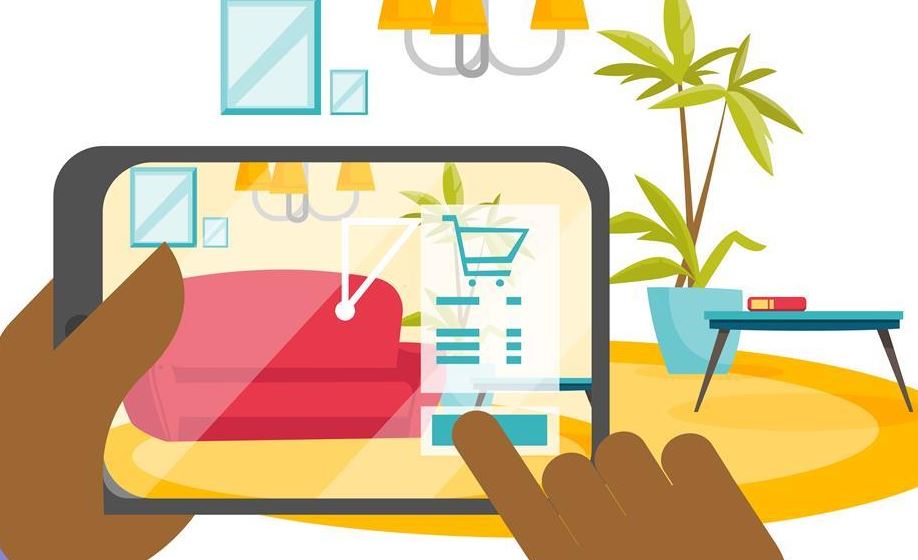Augmented Reality (AR) is changing the face of shopping as we know it. By superimposing computer-generated images on top of the user’s view of the real world, AR transforms the shopping experience by creating a more immersive and interactive environment.
From virtual fitting rooms to interactive product demos, retailers embrace Augmented Reality technology to enhance the shopping experience and increase sales.
Let’s explore in what way AR is revolutionizing how we shop, its advantages, applications, challenges, and future prospects.
Advantages of Augmented Reality in Shopping
Enhanced Shopping Experience
Customers may interact with things in a more interesting and immersive way thanks to AR. Customers may virtually experiment with clothing, see things in their surroundings, and get tailored recommendations.
By providing a more hands-on and interactive shopping experience, AR makes the shopping process more fun and engaging.
Reduction in Product Returns
One of the biggest challenges in online shopping is the high rate of product returns due to incorrect size or poor fit. AR solves this problem by enabling customers to try on clothes virtually, thereby reducing the number of returns. By providing a more accurate representation of the product, AR also reduces the likelihood of customer dissatisfaction.
Personalization of Shopping Experience
AR allows retailers to tailor the shopping experience to individual customers by providing personalized recommendations based on their preferences and shopping history. This enhances customer satisfaction and loyalty and increases the likelihood of repeat purchases.
Improved Engagement
AR creates a more engaging and interactive environment that captures customers’ attention and keeps them engaged. AR helps shops distinguish from rivals and boosts client loyalty by offering a distinctive and immersive purchasing experience.
Increase in Sales and Revenue
AR has been shown to increase sales and revenue by providing a more engaging and immersive shopping experience. By creating a more compelling environment for customers, AR increases the likelihood of impulse purchases and repeat business.
Applications of Augmented Reality in Shopping
Virtual Fitting Rooms
Customers may virtually try on clothing thanks to AR, allowing them to see how the items look on them before making a purchase. This improves the consumer experience by lowering the possibility of wrong sizing and returns.
Product Visualization
Customers can better imagine how things will appear in their residence or workplace, thanks to augmented reality (AR). This enhances the likelihood of making a decision and delivers a more interesting and immersive buying experience.
Interactive Product Demos
Customers may interact more directly with products. Customers can, for instance, overlay a visual representation of an item over their camera footage to see how it would look in their house. As a result, there is a higher possibility of purchase and a more interesting and involved buying experience.
Smart Shelves
AR can create smart shelves that display product information, such as prices, features, and reviews. This improves the whole shopping experience and assists clients in making wise purchases.
Mobile AR Apps for Shopping
Retailers are developing mobile AR apps that allow customers to visualise products in their environment and receive personalized recommendations. These apps create a better engaging and more immersive shopping experience that increases the probability of purchase.
Challenges of Augmented Reality in Shopping
Cost of Implementation
AR technology can be expensive, especially for small retailers. This can limit the adoption of AR technology and its potential to revolutionise the shopping industry.
Technical Challenges
Augmented Reality is still in its premature stages, and there are technical challenges that need to be addressed. For example, AR experiences can be glitchy or laggy, detracting from the shopping experience.
User Acceptance
Not all customers are comfortable with using AR technology, and there may be a learning curve for some customers. This can limit the adoption of AR technology and its potential to revolutionize the shopping industry.
Limited Access to Technology
AR technology requires a compatible device, such as a smartphone or tablet, to work. Not all customers have access to these devices, which can limit the adoption of AR technology.
Lack of Standards
There are no established standards for AR technology, making it difficult for retailers to develop and implement AR experiences that work seamlessly across different devices and platforms.
Future of Augmented Reality in Shopping
Increasing Adoption of AR by Retailers
As AR technology becomes more mainstream and accessible, more retailers are likely to adopt it to enhance the shopping experience and increase sales.
Integration of AR with AI
The integration of AR with Artificial Intelligence (AI) technology can create even more personalized and engaging shopping experiences. Retailers, for instance, can utilise AI to generate tailored suggestions according to a customer’s searching and purchasing patterns.
Expansion of AR Beyond Shopping
AR can potentially revolutionize other industries beyond shopping, such as education, healthcare, and entertainment.
Development of AR Wearables
The development of AR wearables, such as smart glasses, can create even more immersive and hands-on shopping experiences that increase customer engagement and satisfaction.
Wrapping Up
Through its ability to create a more interesting, immersive, and customised buying experience, augmented reality is revolutionising the way we purchase. From virtual fitting rooms to smart shelves, AR technology has the potential to transform the shopping industry and increase sales and revenue for retailers.
Although there are several challenges that must be resolved, such as user acceptance and implementation costs. We can anticipate more retailers implementing augmented reality (AR) technology to improve customer experience and boost sales as it becomes more widely available and more reasonably priced.
Abhishek Anand is the founder of Skill Bud Technologies Pvt. Ltd. He is also an author, speaker and mentor.























